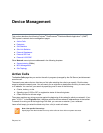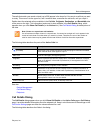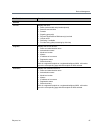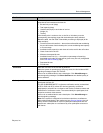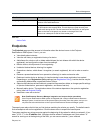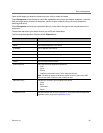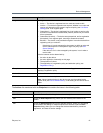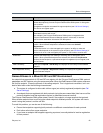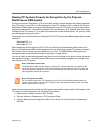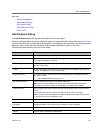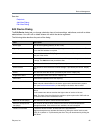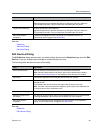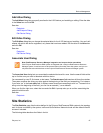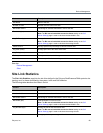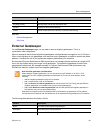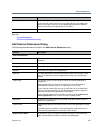
Device Management
Polycom, Inc. 93
Naming ITP Systems Properly for Recognition by the Polycom
RealPresence DMA System
A Polycom Immersive Telepresence (ITP) room system contains multiple displays and codecs (endpoints).
If the ITP system is using SIP or H.323 signaling (not Cisco TIP signaling), then in order for the Polycom
RealPresence DMA system to recognize these devices as part of an ITP system, they must have names
that properly identify them. The names must take the form systemName_M_N, where M is the total number
of displays in the ITP system (2, 3, or 4) and N is the sequence number of each display. The “primary” codec
must be assigned sequence number 1.
For example, the three HDX devices in a Polycom OTX 300 ITP system named Bainbridge might be named
as follows:
Bainbridge ITP_3_1
Bainbridge ITP_3_2
Bainbridge ITP_3_3
When these three devices register (H.323 or SIP) with the Polycom RealPresence DMA system’s Call
Server, the RealPresence DMA system recognizes them as constituting a single ITP system and assigns
them a Gold class of service (you can change this if you wish). The RealPresence DMA system also
manages the device authentication settings as applying to a single system.
You can only edit the device authentication and class of service settings for the primary codec (the device
with sequence number 1); the RealPresence DMA system automatically propagates any changes to the
other devices in the ITP system.
Follow this naming convention for both the HDX system name and the name for each HDX endpoint in the
ITP system. For more information, see the following documents:
● Administrator’s Guide for Polycom HDX Systems
● Polycom Immersive Telepresence (ITP) Deployment Guide
● Polycom Multipoint Layout Application (MLA) User’s Guide for Use with Polycom Telepresence
Solutions
Note: ITP Systems and bit rates
The RealPresence DMA system’s ability to recognize ITP calls and treat them as one assures the
same class of service and device authentication settings for all the endpoints in the ITP system, but
not other registration settings. It’s up to you to ensure that the maximum and minimum bit rates and
other registration settings are consistent.
Note: ITP systems and CDRs
For ITP systems using SIP or TIP signaling (but not H.323), the RealPresence DMA system also
creates a single CDR for calls from the ITP system rather than separate CDRs for each of the three
devices. See Call Record Layouts.



